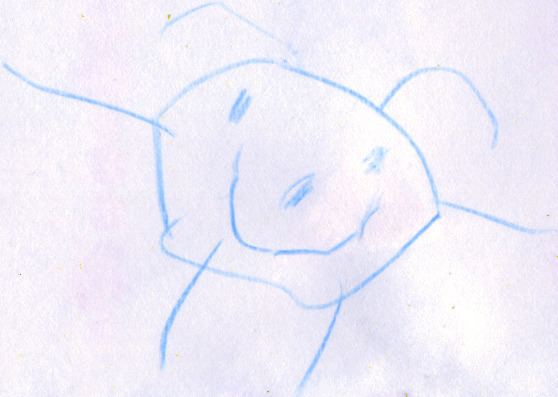 | ||
The House-Tree-Person test (HTP) is a projective test designed to measure aspects of a person's personality. The test can also be used to assess brain damage and general mental functioning. The test is a diagnostic tool for clinical psychologists, educators, and employers. The subject receives a short, unclear instruction (the stimulus) to draw a house, a tree, and the figure of a person. Once the subject is done, they are asked to describe the pictures that they have done. The assumption is that when the subject is drawing they are projecting their inner world onto the page. The administrator of the test uses tools and skills that have been established for the purpose of investigating the subject's inner world through the drawings.
Contents
Generally this test is administered as part of a series of personality and intelligence tests, like the Rorschach, TAT (or CAT for children), Bender, and Wechsler tests. The examiner integrates the results of these tests, creating a basis for evaluating the subject's personality from a cognitive, emotional, intra- and interpersonal perspective.
The test and its method of administration have been criticized for having substantial weaknesses in validity, but a number of researchers in the past few decades have found positive results as regards its validity for specific populations.
History
HTP was designed by John Buck and was originally based on the Goodenough scale of intellectual functioning. The HTP was developed in 1948, and updated in 1969. Buck included both qualitative and quantitative measurements of intellectual ability in the HTP (V). A 350-page manual was written by Buck to instruct the test-giver on proper grading of the HTP, which is more subjective than quantitative. In contrast with him, Zoltán Vass published a more sophisticated approach, based on system analysis (SSCA, Seven-Step Configuration Analysis).
Administering the test
HTP is given to persons above the age of three and takes approximately 150 minutes to complete based on the subject's level of mental functioning. During the first phase, the test-taker is asked to draw the house, tree, and person and the test-giver asks questions about each picture. There are 60 questions originally designed by Buck but art therapists and trained test givers can also design their own questions, or ask follow up questions. This phase is done with a crayon. During the second phase of HTP, the test-taker draws the same pictures with a pencil or pen. Again the test-giver asks similar questions about the drawings. Note: some mental health professionals only administer phase one or two and may change the writing instrument as desired. Variations of the test may ask the person to draw one person of each sex, or put all drawings on the same page.
Examples of follow up questions:
Interpretation of results
By virtue of being a projective test, the results of the HTP are subjective and open to interpretation by the administrator of the exam. The subjective analysis of the test takers responses and drawings aims to make inferences of personality traits and past experiences. The subjective nature of this aspect of the HTP, as with other qualitative tests, has little empirical evidence to support its reliability or validity. This test, however, is still considered an accurate measure of brain damage and used in the assessment of schizophrenic patients also suffering from brain damage. In addition, the quantitative measure of intelligence for the House-tree-person has been shown to highly correlate with the WAIS and other well-established intelligence tests.
